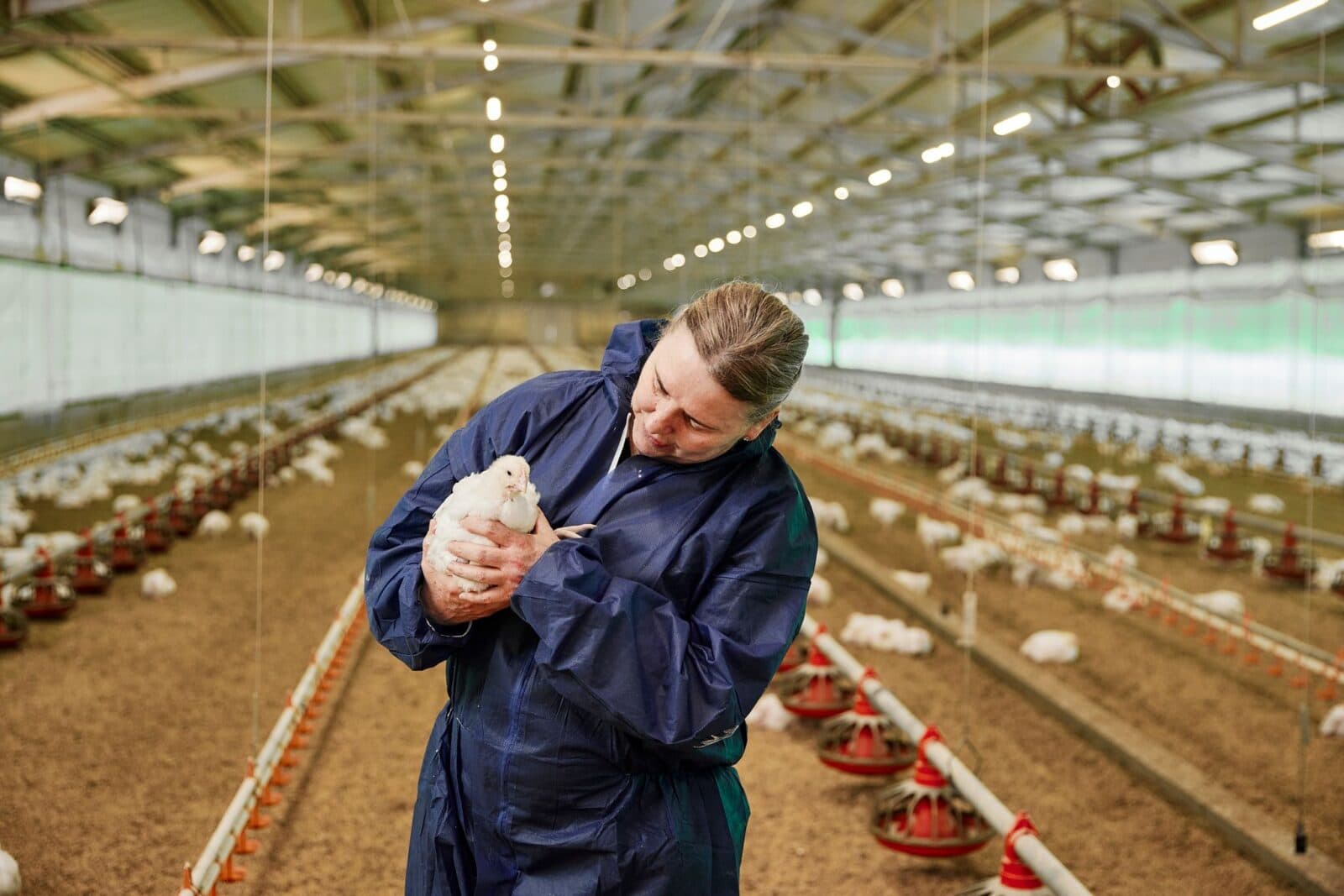2024 Catalyst Cohort revealed

 CHICKEN MEAT / Wednesday, 31 January 2024
CHICKEN MEAT / Wednesday, 31 January 2024 
The findings from a collection of projects exploring the fundamental aspects of poultry nutrition can help producers make step-change progress towards more cost-effective and sustainable chicken meat production, by reducing inputs, minimising production-related waste and enhancing bird performance and welfare.
The need for continuous improvement in meat chicken feed formulations is driven by a number of factors, including the affordability of, and ongoing demand for, chicken meat produced via methods aligned with community expectations, competition for critical inputs (e.g. feed grains), a reliance on imported protein meal, and the need to mitigate the industry’s environmental impacts.
Researchers at the forefront of dietary science have investigated ways to improve key nutritional drivers of on-farm productivity through improved feed conversion ratios (FCR) (beyond those attributable to genetics), improved cost effectiveness of feed formulations (by reducing the reliance on imported feedstuffs), and greater energy utilisation per kilogram of live bird produced.
“The viability of the Australian chicken meat industry depends on optimal animal health and welfare underpinned by cost-efficient and environmentally responsibly production systems,” AgriFutures Chicken Meat Advisory Panel Chair, Katherine Balding said.
“More than 60% of the total cost of chicken meat production can be attributed to feed — it is a major area of focus not only for growers, but also for our research investment.
“A core objective of the RD&E Plan for 2019–2022 was to improve chicken meat production through the whole supply chain and the findings from a series of investigations pertaining to optimal chicken nutrition will underpin improvements in both production efficiencies and environmental sustainability.
“Protein and energy are not only the most expensive constituents of a meat chicken’s diet, but they also underpin a balanced diet that supports their productivity, health and wellbeing — so this is where much of our nutrition-related work has been focused.
Reliance on imports drives research
Assoc. Prof. Sonia Liu from The University of Sydney has been involved across a number of the projects funded by the AgriFutures Chicken Meat Program exploring ways to reduce dietary protein requirements and nitrogen excretion without compromising growth performance.
“A key challenge for Australia’s chicken meat industry is its reliance on imported dietary protein,” Sonia explained.
During 2020, Australia imported 1.18 million tonnes of soybean meal at an approximate landed cost of $750/tonne.
The bulk of these shipments, perhaps more than 700,000 tonnes, was absorbed by the domestic chicken meat industry, making it highly vulnerable to fluctuations in global
soybean meal prices.
“A reduced-protein diet has the potential to halve the industry’s dependence on imported soybean meal, limit its exposure to fluctuations in global prices, and reduce the
carbon footprint of feed production,” Sonia said.
“In terms of environmental benefits of reduced-protein diets, we are also striving to improve litter quality, diminish nitrogen pollution and ammonia emissions, and enhance
bird welfare.”
However, several obstacles are thwarting the development of a successful reduced-protein diet for meat chickens, which researchers like Sonia have been tackling.
“Meat chickens have a recommended requirement for crude protein, ranging from 180–230 g/kg,” Sonia explained.
“As dietary crude protein is reduced, growth performance is often impaired, body fat and fat pad weight increase, and gut health is negatively affected.
“Reducing crude protein content while maintaining meat chicken performance is the industry’s biggest nutrition-related challenge.”
Through their research, Sonia’s team and others have demonstrated that a moderate reduction of crude protein (with inclusion of locally grown canola meal), could allow
chicken meat producers to eliminate imported soybean meal in grower and finisher broiler diets.
Energy plays key role in dietary big picture
Although protein is a key dietary component driving poultry production, it is just one part of the larger dietary puzzle. Dietary energy is also critical for bird health and
performance, and forms another major cost component of diet formulations.
Several projects funded by the Program have explored the interplay of energy and protein in the diet of meat chickens, and investigated ways to optimise production efficiencies without compromising bird health. As part of one, Sonia and a team from The University of Sydney explored the complex dynamics of glucose (i.e. energy), non-bound amino acids and protein-bound amino acids, which are critical when formulating reduced-protein diets.
“Through our research we have generated a preliminary database of protein and starch digestion rates in common Australian feed ingredients,” Sonia said.
“As a consequence, nutritionists will be better positioned to predict and improve the efficiency of feed conversion and nutrient utilisation in meat chickens.”
Although numerous studies have reported energy requirement and its relationship to amino acids and protein, the findings are inconsistent and have less relevance to the
Australian industry given the ingredients involved in these studies. Research to determine optimal dietary energy levels relative to amino acid density, using grains relevant to the Australian industry, have been needed to improve local production efficiencies and minimise nutrient excretion. As the fine balance between energy and crude protein comes under the spotlight, the accurate assessment of the energy values of specific ingredients becomes more important.
Within this context, as part of another project funded by the Program, Dr Shubiao Wu and researchers from the University of New England examined metabolisable energy
(ME) data produced for poultry feed ingredients published during the past century to determine the accuracy of different bioassay systems.
“For the past 50 years, the accuracy of ME systems has been an ongoing debate and the comparability of data produced using different bioassay systems developed at various
institutes is often questionable,” Shubiao said.
“We identified a variety of flaws in the literature, suggesting a thorough re-thinking of feedstuff ME values currently used in practical feed formulation and in developing prediction equations.”
The research team proposed two protocols — multiple linear regression and basal diet substitution methods — as more accurate bioassays for evaluating feedstuff ME values.
“In addition, AME values without correction to zero nitrogen retention align more closely with the actual energy levels of feed ingredients likely available to growing birds, which
should be used for poultry feed formulations instead of AME,” Shubiao said.
“The poultry industry will benefit significantly from the research through refined formulations according to more accurate AME values of feed ingredients.”
Find out more about what’s been happening in the AgriFutures Chicken Meat Program
Subscribe to stay up to date with the AgriFutures Chicken Meat Program
 GLOBAL INNOVATION NETWORKS / 31.01.24
GLOBAL INNOVATION NETWORKS / 31.01.24  TEA TREE OIL / 31.01.24
TEA TREE OIL / 31.01.24  WORKFORCE AND LEADERSHIP / 31.01.24
WORKFORCE AND LEADERSHIP / 31.01.24  EMERGING INDUSTRIES / 31.01.24
EMERGING INDUSTRIES / 31.01.24